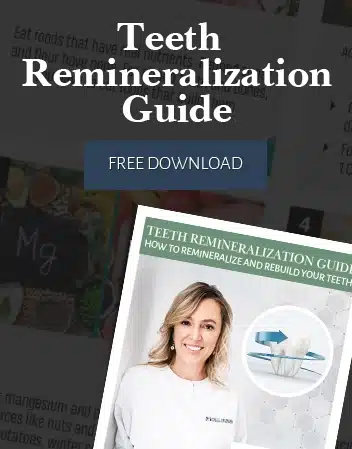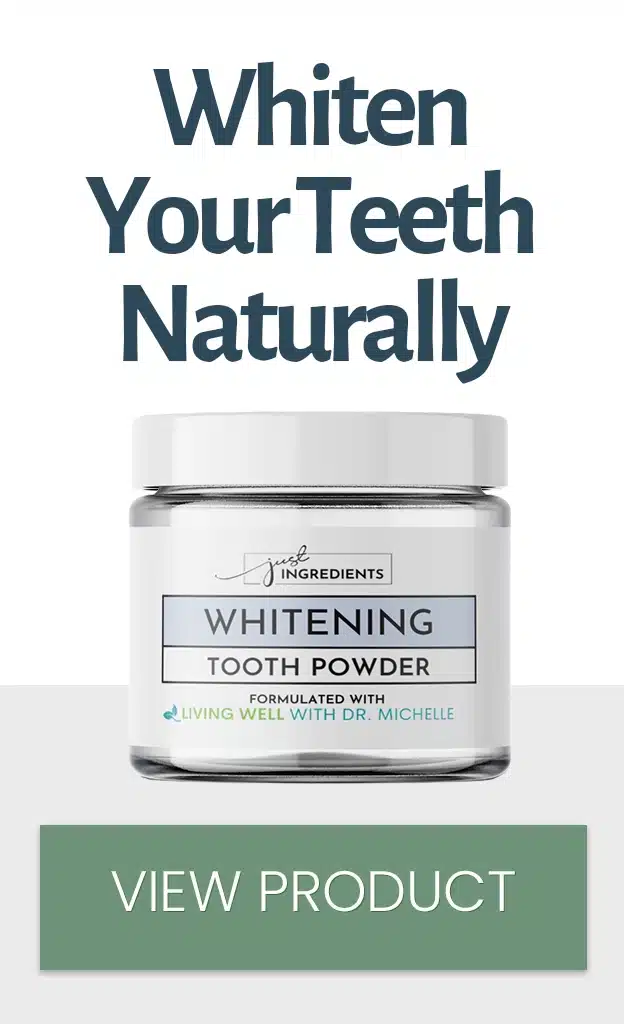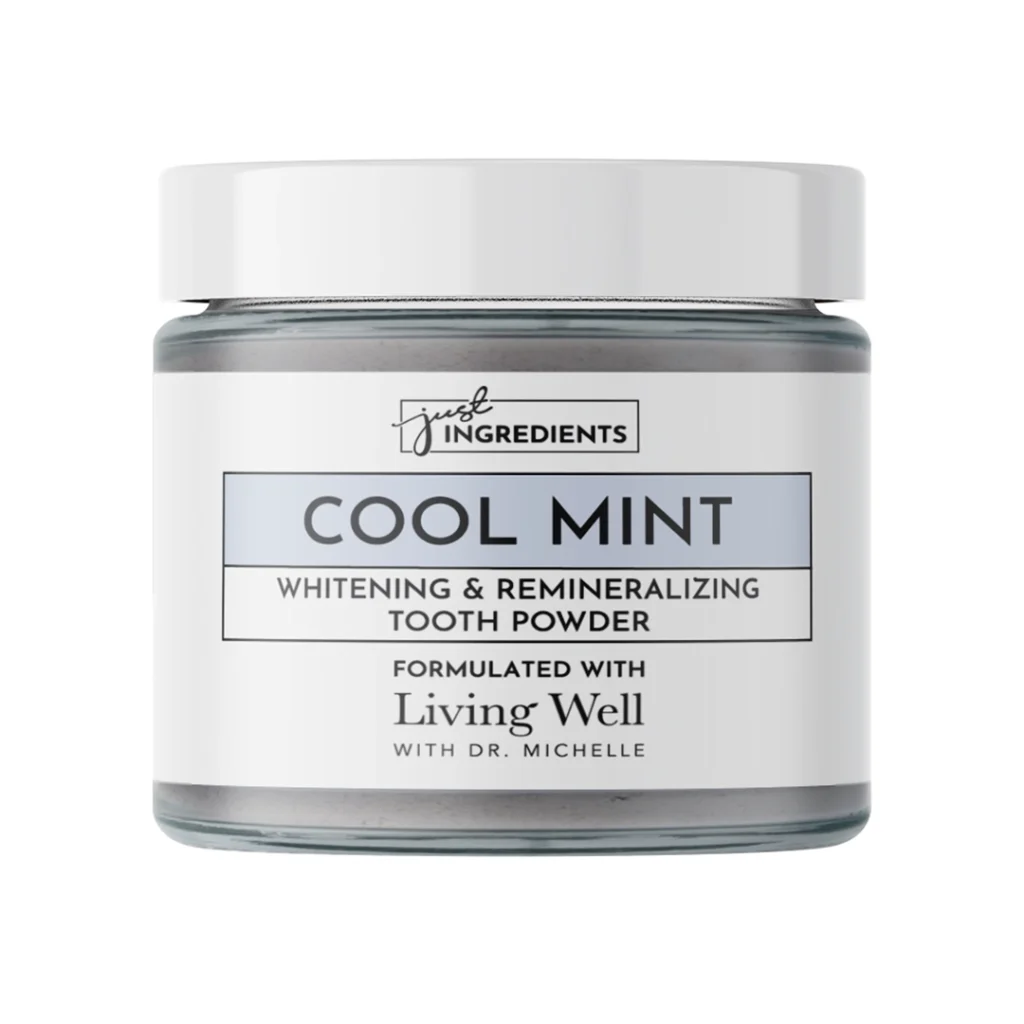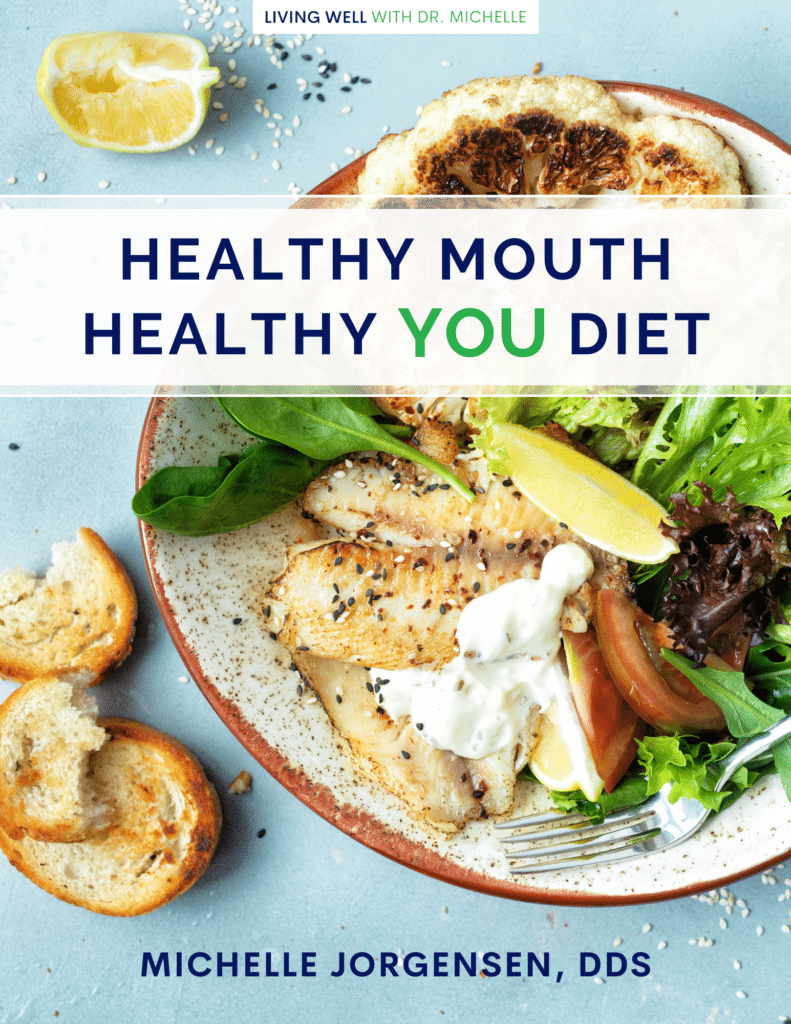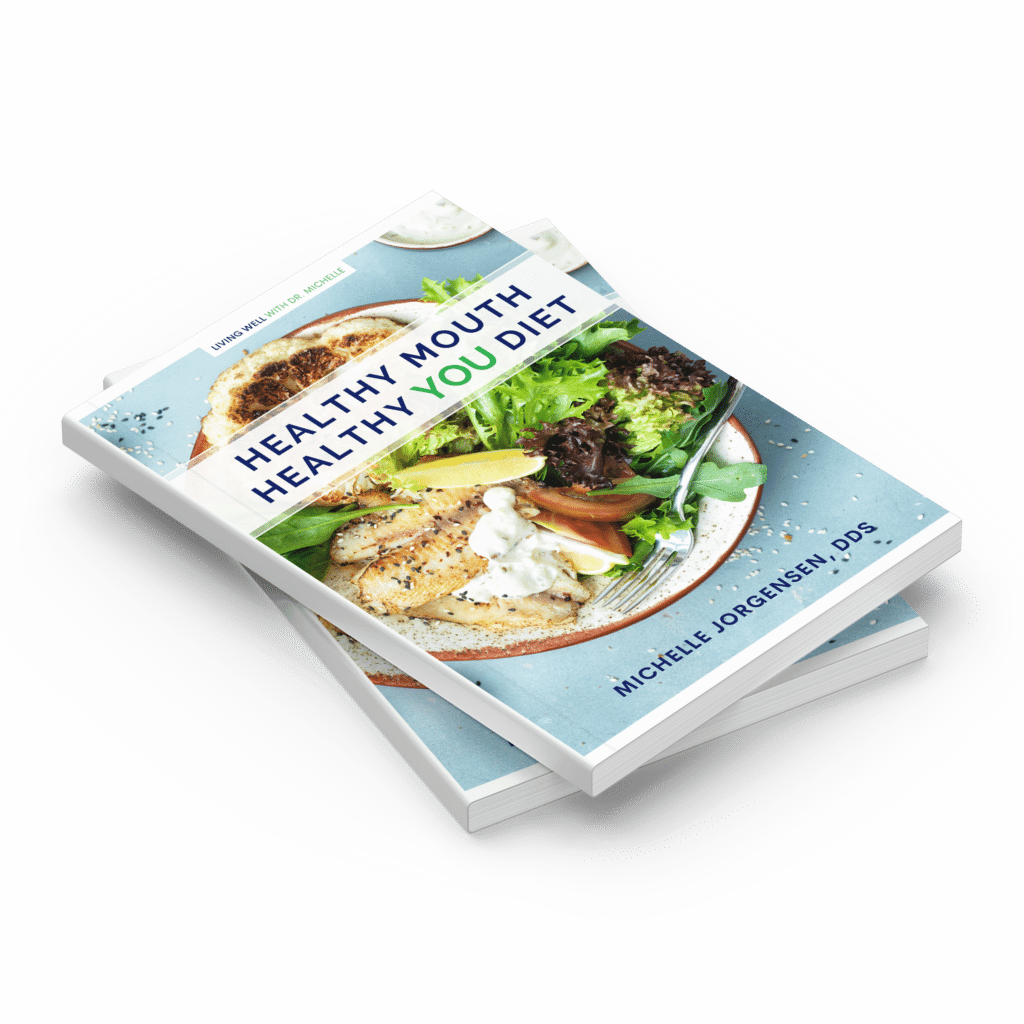
Dr. MIchelle Jorgensen
Natural Teeth Whitening at Home: Safe and Effective Tips for a Brighter Smile
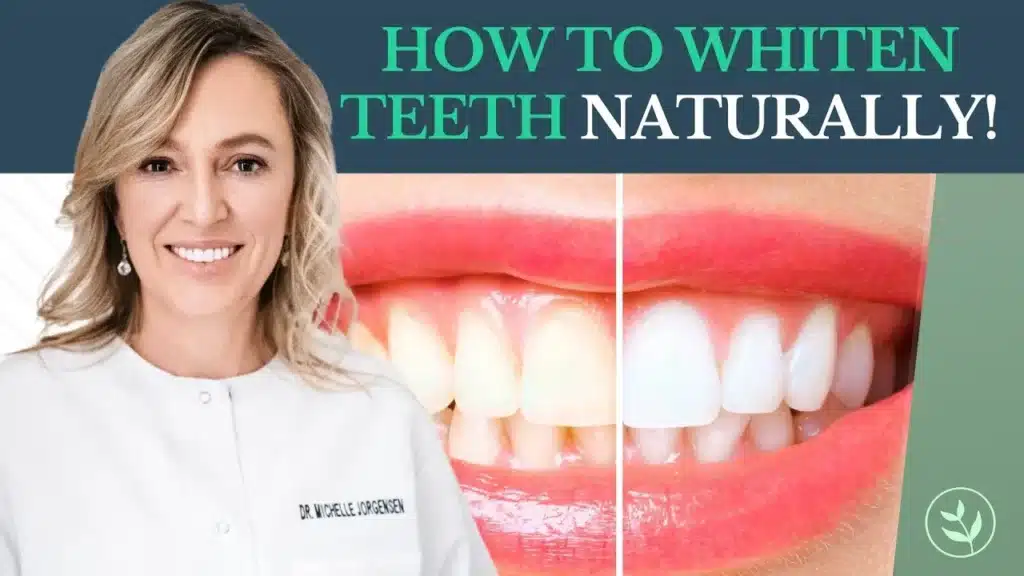
A bright, white smile can boost confidence and help you feel your best. However, not all whitening methods are created equal…
Many over-the-counter products contain harsh chemicals that can harm your enamel and leave your teeth feeling sensitive. That’s why it’s important to choose NATURAL ways to whiten your teeth—methods that are safe, effective, and support your overall health.
In this article, we’ll explore the best ways to naturally whiten your teeth at home. We’ll cover the science behind natural whitening, discuss safe DIY methods, and highlight products that I recommend.
Why Choose Natural Teeth Whitening?
Some conventional teeth whitening methods can do more harm than good. Many of these products contain hydrogen peroxide or other chemicals that may cause enamel erosion or increase tooth sensitivity. Plus, they often lack the minerals your teeth need to stay strong.
Instead, natural whitening focuses on preserving tooth enamel and using gentle, non-toxic ingredients…
An effective approach uses natural ingredients with proven whitening properties—like baking soda and activated charcoal—while also remineralizing your teeth to keep them healthy and strong.
he Importance of Dental Hygiene for a Whiter Smile
Maintaining good dental hygiene is essential when it comes to keeping your smile bright and your teeth healthy. Brushing twice a day with a whitening toothpaste can help remove stains and prevent plaque buildup. However, choosing the right toothpaste is key. Many commercial toothpaste brands contain harsh chemicals that may cause enamel damage, so opt for a natural formula instead.
Regular dental check-ups are also crucial. A professional cleaning can remove tough stains that at-home remedies may not reach. Additionally, cosmetic dentists can evaluate your teeth and recommend safe whitening treatments tailored to your oral health needs.
Common DIY Teeth Whitening Methods (and Their Risks)
There are plenty of DIY methods out there claiming to give you a brighter smile. Here’s the truth behind some of the most popular ones:
Baking Soda: A natural mild abrasive that can polish away surface stains. However, using it too often or too vigorously can wear down your enamel, leading to tooth sensitivity.
Hydrogen Peroxide: Often used in commercial whitening products, but it can cause sensitivity when used frequently. Using a lower percentage of hydrogen peroxide can reduce the risk of enamel erosion.
Lemon Juice and Apple Cider Vinegar: These are natural bleaching agents, but their acidity can erode tooth enamel if overused.
Activated Charcoal: Great for removing surface stains without damaging enamel, but make sure you choose a product with finely ground charcoal to minimize abrasion.
To get the best of natural whitening without the risks, try using Whitening & Remineralizing Tooth Powder. It’s formulated to gently whiten your teeth while supporting your enamel’s natural strength.
The Best Way to Whiten Teeth at Home: Whitening & Remineralizing Tooth Powder
One of the safest and most effective ways to whiten teeth at home is using Whitening & Remineralizing Tooth Powder. It’s packed with ingredients that naturally brighten your smile while also protecting your tooth enamel.
Key Ingredients and Benefits:
Activated Charcoal: Naturally whitens without sensitivity.
Baking Soda: Gently removes surface stains and helps balance pH.
Hydroxyapatite: Rebuilds enamel, helping to prevent sensitivity and decay.
Essential Oils: Keep your breath fresh and your gums healthy.
Customers love it because it works without causing pain or sensitivity. Plus, it’s fluoride-free and made with natural ingredients you can trust.
Natural Teeth Whitening Techniques You Can Try at Home
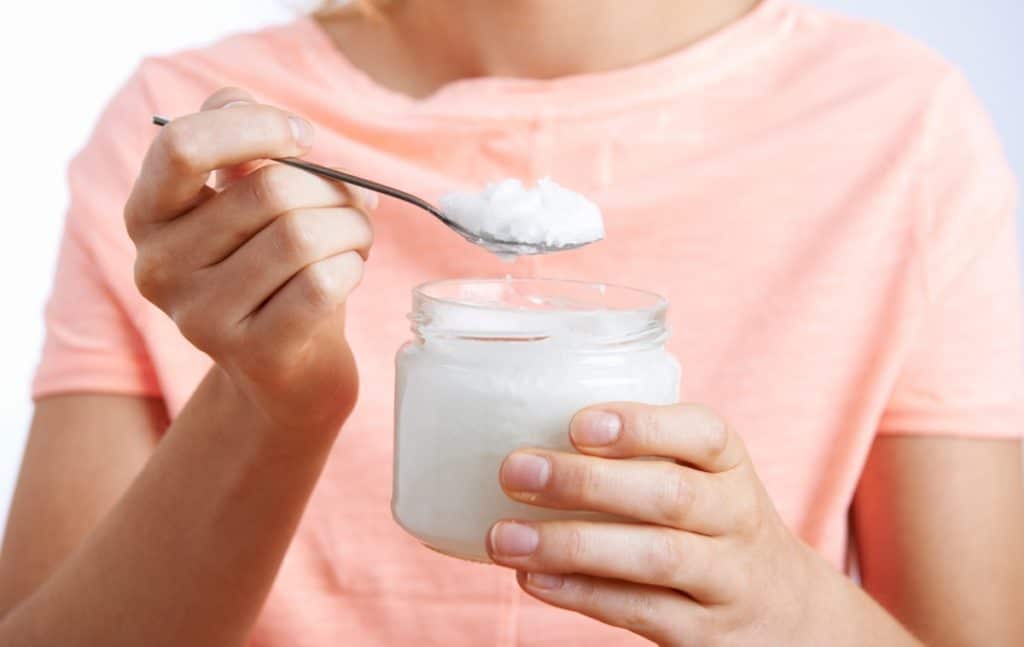
Besides using the Whitening Tooth Powder, here are some other natural methods to consider:
Oil Pulling with Coconut or Sesame Oil: Helps remove bacteria and reduce stains. Oil pulling can help with oral health by keeping your mouth clean and fresh.
Brushing with Baking Soda: Use occasionally to avoid enamel damage. Baking soda can help remove surface stains and brighten your smile.
Diet Adjustments: Reduce staining foods like coffee, dark berries, and wine. Incorporating more natural teeth-friendly foods like crunchy vegetables can also help maintain naturally white teeth.
What to Avoid When Whitening Your Teeth at Home
Some popular methods can actually do more harm than good. Avoid these common mistakes:
Overusing DIY Abrasives: Baking soda or charcoal too often can thin your enamel.
Acidic Whitening Pastes: Combining lemon juice with baking soda may whiten temporarily but erode enamel over time.
Over-the-Counter Products with Low Active Ingredients: These can be harsh on your teeth without delivering results.
The Role of Cosmetic Dentistry in Teeth Whitening
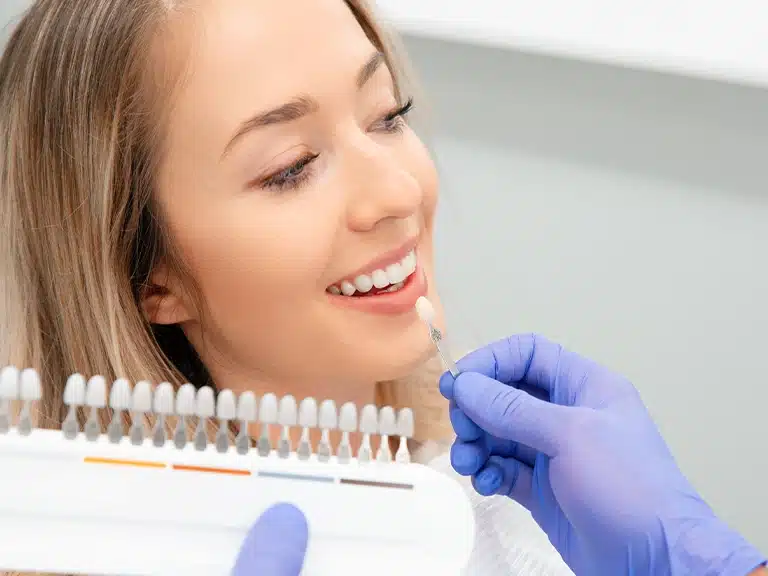
Sometimes natural methods aren’t enough, especially if you have deep tooth discoloration or tough stains. In such cases, consulting with a cosmetic dentist is a smart move. They can provide whitening gels or professional treatments that are safe and effective. Cosmetic dentists focus on protecting your enamel while achieving a whiter smile.
Conclusion: The Smarter, Healthier Way to Whiten Your Teeth
The best way to achieve a whiter smile at home is to choose natural, gentle methods that protect your teeth. Whitening & Remineralizing Tooth Powder is designed to give you a brighter smile without the harsh chemicals, so you can feel confident without compromising your health.
Ready to see the difference? Try Whitening Tooth Powder today and enjoy a naturally brighter, healthier smile!

Dr. Michelle Jorgensen
Dr. Michelle Jorgensen is an author, speaker, teacher, biologic/holistic dentist, and health and wellness, provider.
Dr. Michelle Jorgensen is also a Board Certified Traditional Naturopath and has received certifications as a Therapeutic Nutritional Counselor, and a Certified Nutritional Autoimmune Specialist. She completed a Holistic Dental Mini-Residency and is pursuing ongoing training from experts around the world in health-related fields.
Dr. Jorgensen also teaches and coaches groups of dental professionals across the country through her Living Well Professionals training. They learn how to integrate dentistry with other health disciplines to provide an integrated, whole body approach to care.

